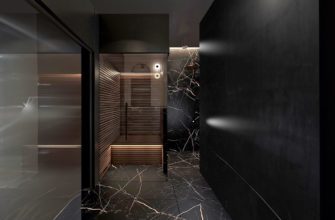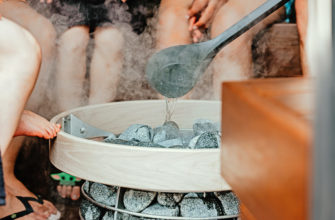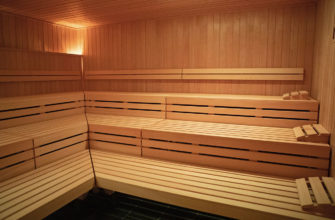Many legends tell of the origin of the sauna. According to one Finnish legend, once upon a time raindrops entered Finn’s house through a hole in the roof. Falling on the hot stones of the fireplace, they turned into steam and filled the room with warmth and freshness. Thus began the history of the Finnish sauna. And to be serious, the word “sauna” actually has Finnish origins, and here the old traditions and recipes for treatment with sauna treatments have survived to this day. In the old days, the people of Finland heated themselves in their dugouts using stone hearths that kept them warm for a long time.
From what language does the word sauna come?
The word “sauna” comes from Finnish and means a room or facility designed for steam bathing and relaxation, usually heated by a hot stone stove.
History of the sauna in the world
At first they were portable structures built of rods and animal skins, and after the Finns settled in the northern territories of Europe, the protoplasts of the Finnish sauna became pits carved in the ground covered with logs. In the center of such a structure was a hearth with lots of stones, which heated up and kept warm. Later, wooden huts began to be built, in which stone stoves were installed.
For the Finns, the sauna was a place of rest after physical labor, a place of spiritual purification. The saunas were used to treat the sick, receive births and, of course, in the harsh climate, it was a place to get warm and wash. In the 12th century, when Finland was under the rule of a Swedish king, a royal edict was issued banning saunas for fire safety reasons. However, the belief in the cleansing power of the sauna in the hearts of the Finns was so strong that they continued their sauna traditions despite the fear of punishment.
For a time, baths were set up directly in homes, periodically releasing smoke from the stove through the door. Later they began to be arranged in separate rooms.
When was the first sauna established?
It is not known exactly when the first sauna was created, but the first commemoration was recorded about 2,500 years ago.
History tells us that the protoplasts of the Finnish sauna were the Skifian baths, which the ancient historian Herodotus wrote about in 400 BC. When the Skifians threw raw hemp seeds onto heated stones, they gave off heat and an unusual aroma.
The next references are to the Arab traveler Ibn Jetsha, who described the daily life of the Bulgarians. Baths in ancient Bulgaria were used in winter as the main dwellings. They were well heated and kept the house from getting cold.
The baths of ancient Rome are considered the most luxurious. The area of the baths was huge, and one such bath could accommodate up to 2,000 people. Hence the origin of the term “Roman public baths”, which became popularly known as Thermae. A distinctive feature of Roman baths: the floor was heated to 60 degrees Celsius. Romans had to walk around the baths in special wooden shoes, because the heat of the baths came from the floor. In the sauna, the Romans not only washed themselves, but also discussed important matters of state, enjoyed massages and simply relaxed. Asiatic rulers followed the example of the Romans.
The evolution of the sauna
If ancient texts are to be believed, the history of dry baths dates back at least 2,000 years. Initially, they were built as tents that could be moved from place to place. Inside was a large vessel with water, into which stones, previously heated on a fire, were thrown. Later, for fire safety reasons, bathing procedures began to be permitted only in specially equipped rooms.
In the Middle Ages, there were about 50 public saunas in Vienna. There was a period in Western Europe when saunas began to be widely closed and then banned altogether due to the prevailing decline in morals and the spread of various venereal diseases. The revival of saunas came in the second half of the 20th century. In Finland, saunas with a chimney began to be built, which made them even more popular. A changing room began to be set aside in the room, and the bath was separated from the wash room.
In the 1930s, saunas saw the first electric stoves, which heated the stones in minutes, but in Finland many residents still build saunas according to old traditions, heating the stones in wood-burning stoves.
Today, the sauna is a national symbol of Finland and an integral part of Finnish culture. Statistics say that every second home in Finland has a sauna. The total population of Finland is 5 million people, and the number of saunas for the whole country is about 2 million. Finns produce both classic wood-fired and electric stoves.
In 1965, Japanese physician Tadashi Ishikawa created the first infrared heater. In 1979, a cabin with several infrared heaters was invented, giving rise to “infrared cabins”.
Why have saunas become so popular in Europe?
The sauna has gained popularity in Europe for its numerous health and well-being benefits. The heat and steam open the pores, which promotes skin cleansing, and the high temperature has a relaxing effect. Saunas can also help reduce stress, muscle pain and improve circulation. In addition, the tradition of visiting saunas contributed to integration and community building, as it was a place to meet, talk and spend time with loved ones. In Europe, the largest number of saunas are located in the territories of northern countries, where winter is cold and saunas are a great way to warm up.








